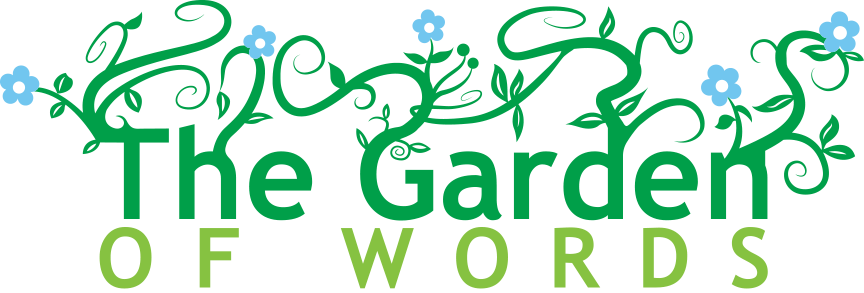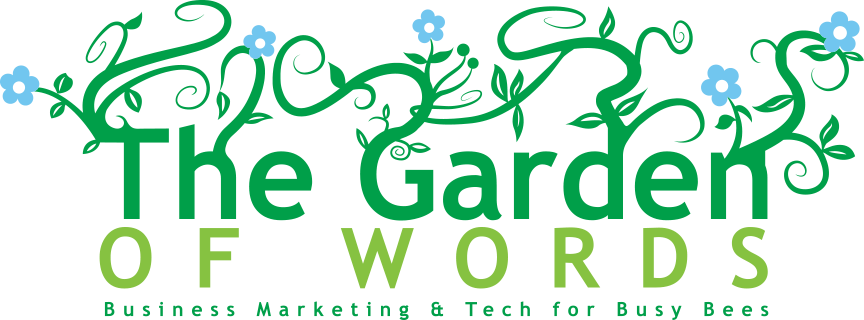
“WB? Dang!! I never find squat there beyond dead fish.”
A comment from my friend under an Instagram picture of my beach combing finds from Sunday. It was a two hour session with Susan (my fossil expert – and more) at Wrightsville Beach from Lot 4 to Shell Island. It’s pretty prime fossil- finding grounds. That day I had found two shark teeth. One a nifty sand tiger tooth, the other, I can’t remember. Susan would know.
“It’s a lot easier to find the teeth once you know what you’re looking for,” is what I tell people.
Susan taught me how. She picked up a tooth and pointed out its particulars:
- Dark, dark black exterior. Darker than anything but tar balls or asphalt chunks.
- Smooth and shiny, shiny, shiny. (The enamel.)
- Bumpy on the top (The root.)
- Serrations (Not all shark teeth have them. My sand tiger find did not. But it met the rest of the criteria.)
“Why are they so dark black?” I asked. “If they start out white.”
“Because of the minerals in the location where they fossilized,” she said. Most (though not all) fossils we find on Wrightsville Beach are black because of the minerals where the the fossils formed.
It’s easier to find them when you know what you’re looking for.
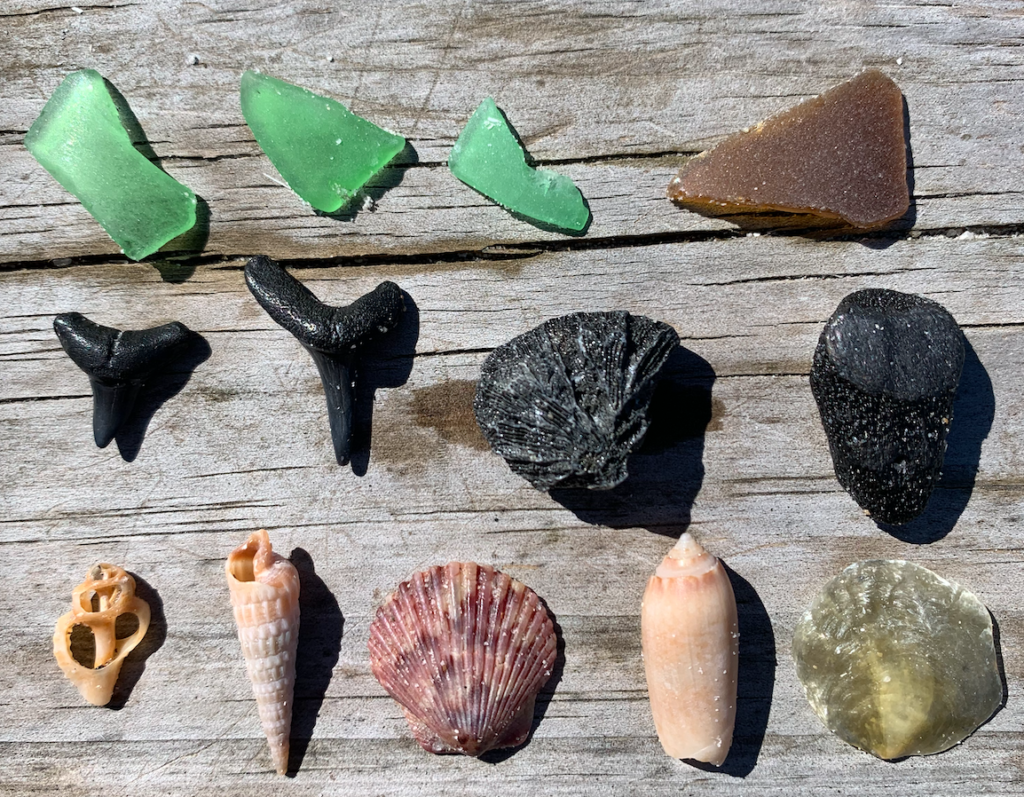
The “test model” of the B-17 Bomber first rolled down a runway on July 28, 1935. It was called “Model 299” and, at 75 feet long with a 100 foot wingspan, it was larger than almost every other plane in production at the time. It was insanely complicated to fly but with its four machine gun positions and other features, it earned a nickname: “The Flying Fortress.” It was faster than the fighter planes criss-crossing the skies and could seemingly do anything.
On October 30, 1935 few months after its debut, the only “Model 299” in existence crashed shortly after takeoff. Leslie Tower, a famous Boeing test pilot, forgot to release a control lock before takeoff, so the pilot(s) couldn’t access the controls. The plane stalled. Tower, the invincible pilot, was pulled from the burning wreckage, but died from his injuries.
The crash almost ended Boeing and might have been the end of the B-17 bomber. Without it, the world would look very different today. (Good, bad, same but sideways, it would be different.) The B-17 played a huge part in World War II.
What saved it?
A checklist.
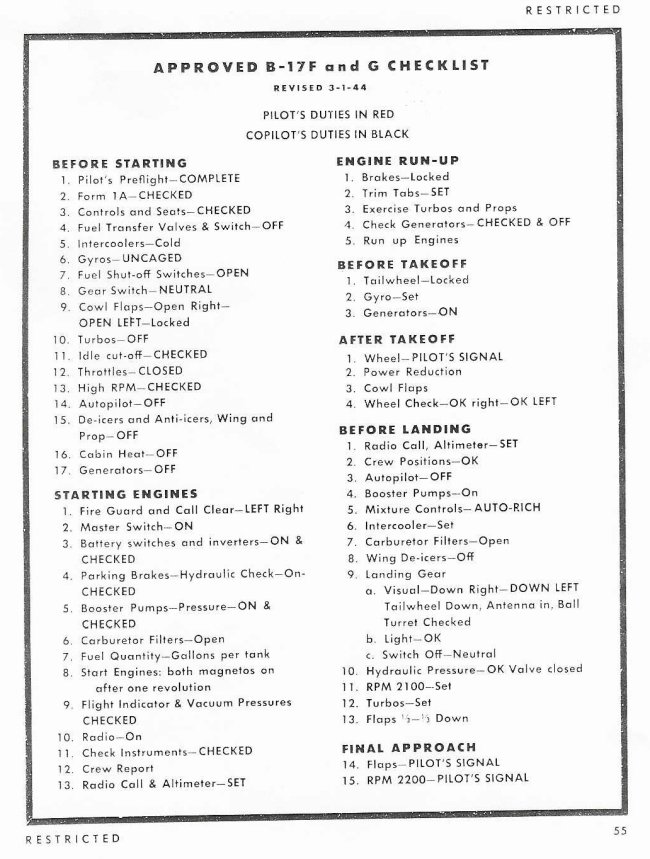
The plane was so complicated to fly that pilots had to remember dozens and dozens of steps during startup, takeoff, after takeoff, before landing and after landing. Forget one (release the control lock) and they were toast.
Not great for a life-or-death, high pressure situation potentially involving bullets.
“I guess those higher ups think we don’t know how to do our jobs,” was the prevailing thought.
Isn’t that something? A tool to make sure the pilots didn’t die was not immediately embraced.
Often, introducing a checklist isn’t the most popular move a manager can make, but once people use it and find that it helps them catch things they might have missed and frees up their brain space, they usually come around. A checklist is a safety net – a psychological safety net (This will help me do my job right so I won’t be reprimanded or have to say I’m sorry) and a physical safety net (If I follow this procedure, I shouldn’t end up with growth regulator in my eye.).
73 after the B-17 prototype crash, the Harvard School of Public Health in partnership with the WHO released the “Safe Surgery Checklist” and the B-17 checklist is cited as one of the sparks of inspiration for it.
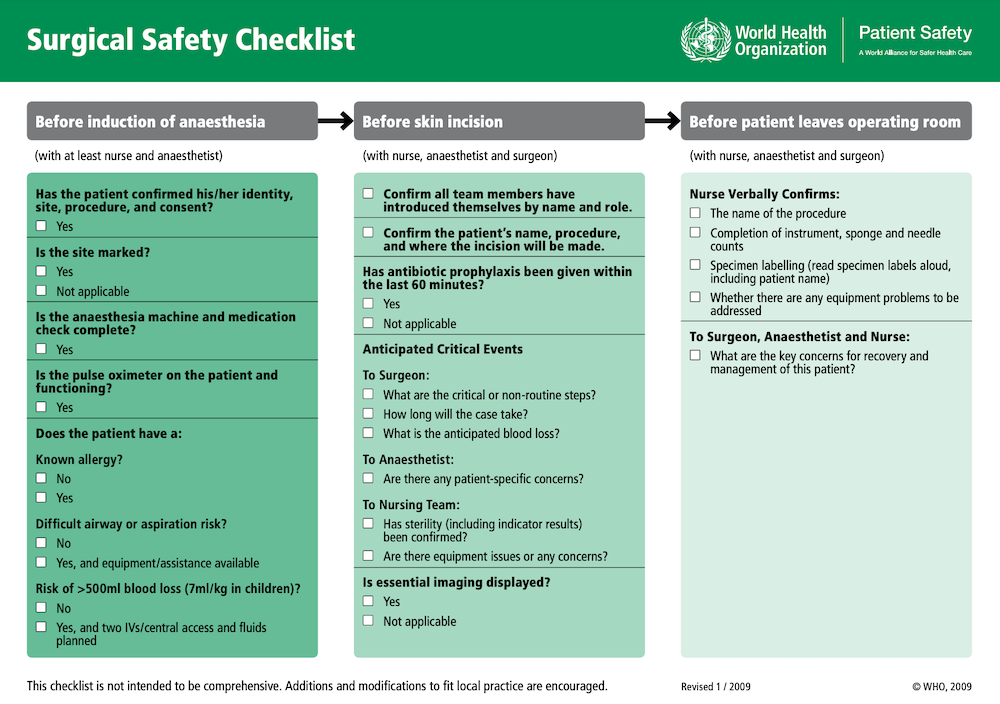
In 2009 data collected from around the world showed that, due to widespread use of the checklist, preventable deaths declined by 40%, and complications were down a third.
Retiring on the funds from a medical malpractice lawsuit settlement necessitated by your surgeon leaving a sponge inside you might sound like an attractive possibility, but the likelier outcome is sepsis and death. I’ll keep contributing to my IRA.
Checklists are simple forms of SOPs (standard operating procedures).
They prevent actual death.
Could they prevent the death of your business?
Let’s chew on it.
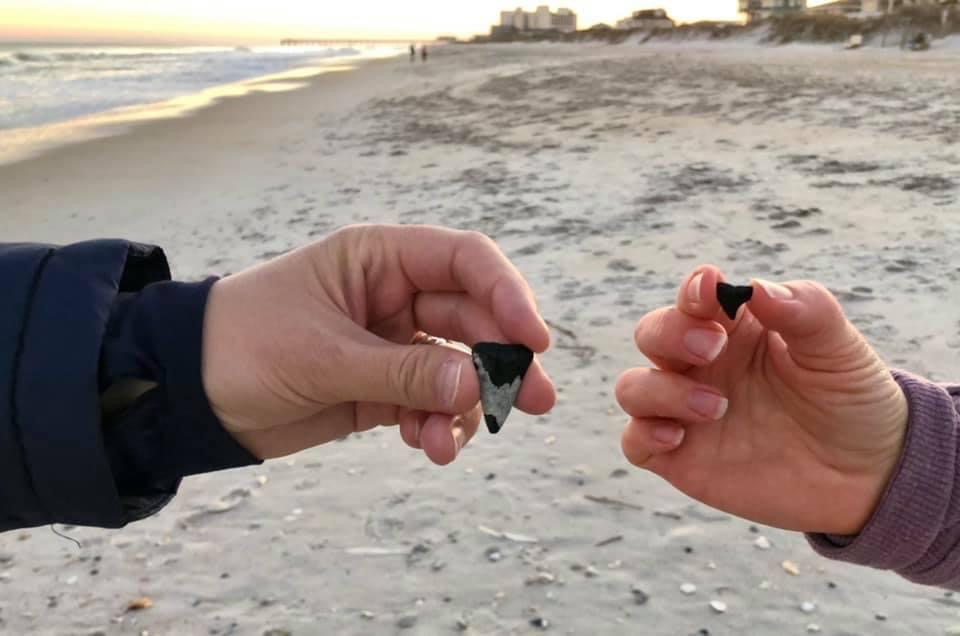
Some questions to ask yourself:
- Do I constantly find errors in work I assign to someone else?
- Do I find myself explaining how to do the same thing over and over and over?
- Do I arrive at speaking engagements without my handouts/ aux cord/ books/ square card reader/ laser pointer?
- Does my crew end up on job sites without their tools/ printed pick sheets/ blowers/ sawzalls?
- Have I lost part of a crop to pesticide drift?
- Did I lose a month’s worth of data from my website?
- Did my email go out with broken links?
- Do I work 14 hours a day?
- Did I forget to eat lunch?
- Was I missing my phone charger when I arrived at my vacation destination? Or maybe my toothbrush or possibly my pajamas?
If you answered “yes” to any of those, checklists will help!
The power of a checklist for a business owner is that it allows you to get help.
Suddenly, all of the steps to do the thing are written down. Now someone else can help do the thing!
The power of a checklist is that, when followed, it helps avoid preventable errors.
I like checklists and SOPs because they free up my brain for creativity. If I don’t have to remember to check the Alt text on images in emails because it’s on my pre-send checklist, I can be more creative writing the content for the emails.
We have finite attention and brainpower.
Why not use it for the things that matter most?
Start with the 5 Ws
Not sure how to start creating your checklists? Answer the 5 Ws for your project:
- Who
- What
- Where
- Why
- When
Who is doing it? Katie
What is it? Writing a checklist for proofing emails before they are scheduled.
What should the checklist contain? Each area of the email to verify before sending.
Where can Katie find the information? Look through Klaviyo articles, google “email best practices” and compare notes.
Why is this checklist needed? So that links work, and customers can buy lots of plants without running into problems.
What is the impact of following this checklist? Higher sales due to a professional look and fully operational links, accurate copy, and enticing calls to action.
Or start with a template
Here is a free checklist generator with templates that are pre-filled for all kinds of things.
Which checklist should you make first?
I vote for a checklist that will either:
Allow you to hand off a task to someone else
or
free up some of your own brain space.
- Email QA checklists
- Load car for speaking engagement checklist
- International packing checklist
- Order processing checklist
- Personal daily checklist (I literally remind myself to have lunch each day.)
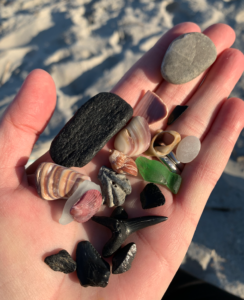
There is no shame in starting with a template.
After all, it’s easier once you know what you’re looking for.
Another reason to love checklists:
Checklists help you get what you want every time you ask for something.
Links
Susan’s favorite beach fossil identification book.
This cookies will kill you but you’ll die happy.
Free calendar template in Google Sheets
Awesome for building editorial calendars.
Have you found anything cool on your nature walk lately? Send me a pic!
And if you make a checklist that you’d like to share with the class, I’d LOVE to see it.
Lastly, if you need help making checklists grab a call time. Maybe I can help.
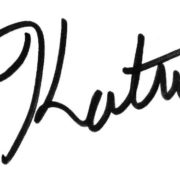
PS: If we’re not connected in LinkedIn, click here to connect! We’re sharing a lot more quick tips on the Garden of Words LinkedIn page and on our agency Instagram @thegardenofwordsagency, too.
PPS: My subject line is a play on the game “Two truths and a lie.” It’s fun at parties.
